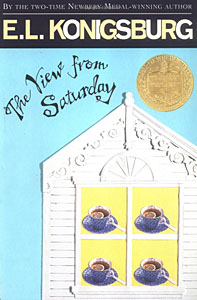The Demon’s Lexicon series is all about roles.
I started the first book, The Demon’s Lexicon, thinking about the role of Mr. Tall, Dark, Handsome and Morally Really Freaking Dodgy, and how we almost never get that guy’s point of view, and what he’d be like from the inside. Almost unforgivably awful, maybe, because you know how bad he is from the start, and you aren’t distracted by his good looks and dashing ways. What’s it like to look into the abyss? And what makes an abyss, anyway?
That was the role that started the ball, ahem, rolling. (Everybody groans and tosses rotten fruit.) From there I thought about roles, and the different ways I could play with them, like genderswitching: what if the hero of an epic fantasy — you know the type, rash and brave and honest and initially clueless — was a girl, what if the Mother Who Would Give Up/Do Anything For Her Kid was a boy?
Some of my ideas were just about going beyond a role, because some roles are true as far as they go, but people are so complex they never go far enough. Such as the gay guy who presents as weaker than other guys — what if he was physically weaker and smaller, and also quite deliberately presenting himself in a certain way, and also a huge magical badass?
 In that category, Rumer Godden gave me permission to write. Kipling both enchanted and troubled me; only many years later did I understand my own need to write about the country he depicted with his strange colonial mixture of tenderness and disdain. But as a child of the late 1950s growing up in India, I cut my reading teeth on Enid Blyton.
In that category, Rumer Godden gave me permission to write. Kipling both enchanted and troubled me; only many years later did I understand my own need to write about the country he depicted with his strange colonial mixture of tenderness and disdain. But as a child of the late 1950s growing up in India, I cut my reading teeth on Enid Blyton. 

.jpg)








